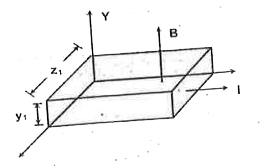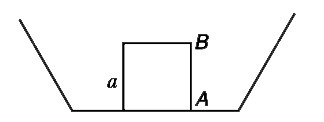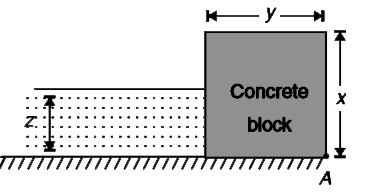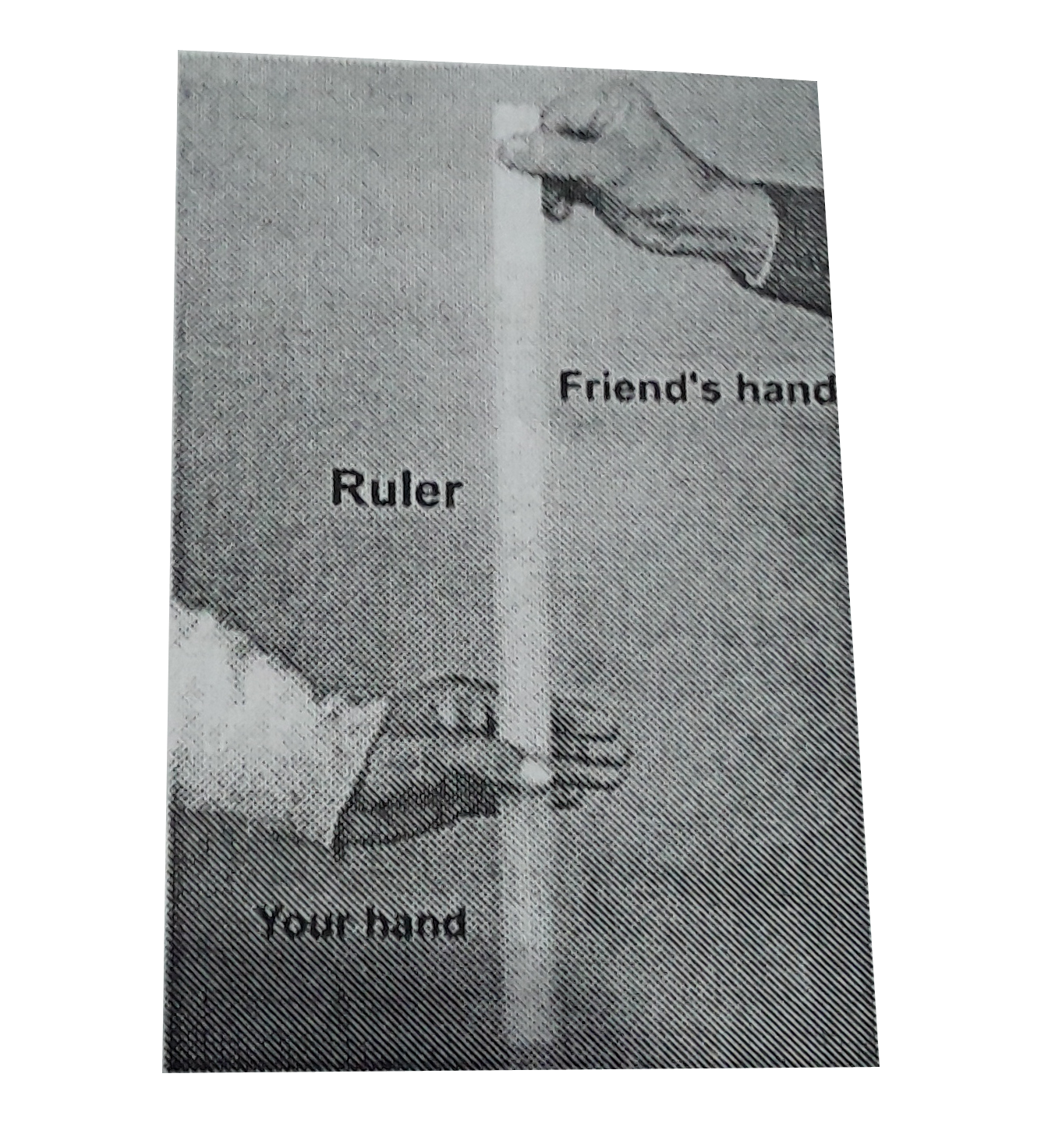A boy measures the thickness of a human hair by looking at it through a microscope of magnification 100x. After 25 observations, the boy finds that the average width of the hair in the field of view of the microscope is 3.8 mm. What is the estimate on the thickness of hair?
To find the estimated thickness of a human hair using the data provided, we can follow these steps:
1. Understanding Magnification: The microscope has a magnification of 100x. This means that the image of the hair appears 100 times larger than its actual size.
2. Average Width in the Microscope: The average width of the hair observed through the microscope is given as 3.8 mm. This measurement is not the actual thickness of the hair but rather the thickness as seen through the microscope.
3. Calculating Actual Thickness: To find the actual thickness of the hair, we need to divide the observed width by the magnification factor.
Actual Thickness=Observed WidthMagnification=3.8 mm100
4. Performing the Calculation:
Actual Thickness=3.8100=0.038 mm
5. Final Result: The estimated thickness of the human hair is 0.038 mm.
Summary of the Calculation:
- Observed Width = 3.8 mm
- Magnification = 100x
- Actual Thickness = 0.038 mm
Actual Thickness=Observed WidthMagnification=3.8 mm100
Actual Thickness=3.8100=0.038 mm
- Observed Width = 3.8 mm
- Magnification = 100x
- Actual Thickness = 0.038 mm
Topper's Solved these Questions
- BOOK - RESNICK AND HALLIDAYCHAPTER - UNITS AND MEASUREMENT EXERCISE - PRACTICE QUESTIONS (SINGLE CORRECT CHOICE TYPE)31videos
UNITS AND MEASUREMENT
- BOOK - RESNICK AND HALLIDAYCHAPTER - UNITS AND MEASUREMENT EXERCISE - PRACTICE QUESTIONS (MORE THAN ONE CORRECT CHOICE TYPE)6videos
UNITS AND MEASUREMENT
- BOOK - RESNICK AND HALLIDAYCHAPTER - UNITS AND MEASUREMENT EXERCISE - PRACTICE QUESTIONS (MATRIX-MATCH)11videos
UNITS AND MEASUREMENT
- BOOK - RESNICK AND HALLIDAYCHAPTER - THE NUCLEUSEXERCISE - PRACTICE QUESTIONS(Integer Type)7videos
THE NUCLEUS
- BOOK - RESNICK AND HALLIDAYCHAPTER - VECTORS EXERCISE - PRACTICE QUESTIONS39videos
VECTORS
Similar Questions
A student measures the thickness of a human hair by looking at it through a microscope of magnification 100. He makes 20 observations and findsd that the average width of the hair in the field of view of the microscope is 3.5mm. What is his estimate on the thickness of hair?
View SolutionA glass plate 4 mm thick is viewed from the above through a microscope. The microscope must be lowered 2.58 mm as the operator shifts from viewing the top surface to viewing the bottom surface through the glass. What is the index of refraction of the glass ?
View Solution
Knowledge Check
- Question 1 - Select One
A student measures the thickness of a human hair by looking at it through a microscope of magnification 100. He makes 20 observations and finds that the average width of the hair in the field of view of the microscope is 3.5 mm. The thickness of hair is
A0.035 mmB0.04 mmC0.35 mmD0.40 mm - Question 2 - Select One
The actual lens set - up of microscope is depicted in figure. Light from the object (O) first passes through the objective and an enlarged, inverted first image is formed. The eyepiece then magnifies this image. Usually the magnification of the eyepiece is fixed (either X10 or X15) and three rotating objective lenses are used: X10,X40 and X60.

The magnification of the eyepiece of a compound microscope is X15. The image height is 25 mm and the magnification of the objective is X40. What is the object height?A1.67 mmB0.60 mmC0.38 mmD0.04 mm - Question 3 - Select One
The basic principle underlying the hall effect is the Lorentz force. Whenk an electron moves along a direction perpendicular to an applied magnetic field. It exeriences a force acting normal to both the directions and moves in response to this force and the force exerted by the internal electric field. For an - n-type bar shaped semiconductor, the carries are predominatly electrons of bulk density n. We assume that the constant current I flows along the x-axis from left to right in the presence of a magnetic field toward the negative z-axis resulting in an excess surface electrical charge on the sides of the sample. this charge results in the hall voltage a potential drop across the two sides of the sample
Thre transverse voltage is the hall voltage VH and its magnitude is equal to IB/qnD, where I is the current B is the magnetic field, d is the sample thickness and q is the elementary charge. A silver ribbon lies as shown in the adjacent figure (z1=11.8mm and = 0.23 mm) carrying a current of 120 A in the x -direction in unifrom magnetic field B = 0.95 T. If electron density is 5.85×1028/m3 then

What is the magnitude and direction of electric field ?A4.5×10−3 V/m in + z dirB45×10−3 V/m In - z dirC2.25×10−3 V/m + x dirD2.25×10−3 V/m In - zdir
You are given two converging lenses of focal lengths 1.25 cm and 5cm to design a compaound microscope.if it is desired to have a magnification of 30, find out the separation between the object and the eyepiece.
or
A small telescope has an objective lens of focal length 150 cm and eyepiece of focal length 5 cm. What is the magnifying of the telescope for viewing distant objects on normal adjustment ?
If this telescope is used to view a 100 m tall tower 3 km away, what is the height of the image of the tower formed 3km away, what is the height of the image of the tower formed by the objective lens ?View Solution(i) A non uniform cube of side length a is kept inside a container as shown in the figure. The average density of the material of the cube is 2 ρ where ρ is the density of water. Water is gradually fille din the container. It is observed that the cube begins to topple, about its edge into the plane of the figure passing through pointA, when the height of the water in the container becomes a2. Find the distance of the centre of mass of the cube from the face AB of the cube. Assume that water seeps under the cube.

(ii) A rectangular concrete block (specific gravity =2.5) is used as a retatining wall in a reservoir of water. The height and width of the block are x and y respectively the height of water in the reservoir is z=34x. the concrete block cannot slide on the horizontal base but can rotate about an axis perpendicular to the plane of the figure and passing through point A

(a) Calculate the minimum value of the ratio yx for which the block will not begin to overturn about A.
(b) Redo the above problem for the case when there is a seepage and a thin film of water is present under the block. Assume that a seal at A prevents the water from flowing out underneath the block.View SolutionFor his 18th birthday in February Peter plants to turn a hut in the garden of his parents into a swimming pool with an artifical beach. In order to estimate the consts for heating the water and the house , peter obtains the data for the natural gas combustion and its price.
What is the total energy (in MJ) needed for Peter's "winter swimming pool" calculated in 1.3 and 1.4? How much natural gas will he need, if the gas heater has an efficiency of 90.0% ?
What are the different costs for the use of either natural gas or electricity ? Use the values given by PUC for your calculations and assume 100% efficiency for the electric heater.
Table 1: Composition of natural gas
Chemical substancemol fraction xD1H∘(KJmol−1)−1S∘(Jmol−1K−1)−1C∘p(Jmol−1K−1)−1CO2(g)0.0024−393.5213.637.1N2(g)0.01340.0191.629.1CH2(g)0.9732−74.6186.335.7C2H3(g)0.0110−84.0229.252.2H2Og−−285.870.075.3H2Og−−241.8188.833.6H2Og−0.0205.229.4
Equation
J=E(A.Δt)−1=!!λwall.ΔT.d−1, where
J= energy flow E along a temperature gradient (wall direction Z) par area A and time Δt, d-wall thickness , λwall -heat conductivity , ΔT - difference in temperature between the inside and the outside of the house.View SolutionIn a YDSE experiment, the distance between the slits & the screen is 100cm. For a certain distance between the slits, an interference pattern is observed on the screen with the fringe width 0.25mm. When the distance between the slits is increased by Δd=1.2mm, the fringe width decreased to n=2/3 of the original value. In the final position, a thin glass plate of refractive index 1.5 is kept in front of one of the slits & the shift of central maximum is observed to be 20 fringe width. Find the thickness of the plate & wavelength of the incident light.
View SolutionWhen a situation demands our immediate action. It takes some time before we really respond. Reaction time is the time a person takes to observe. Think and act. For example. If a person is driving and suddenly a boy appears on the road, then the time elapsed before he slams the brakes of the car is the reaction time. Reaction time depends on complexity of the situation and on an individual.
You can measure your reaction time by a simple experiment. Take a ruler and ask your friend to drop it vertically through the gap between your thumb and forefinger(Fig. 3.15). After you catch it, find the distance d travelled by the ruler. In a particular case, d was found to be 21.0 cm. Estimate reaction time.
 View Solution
View Solution

